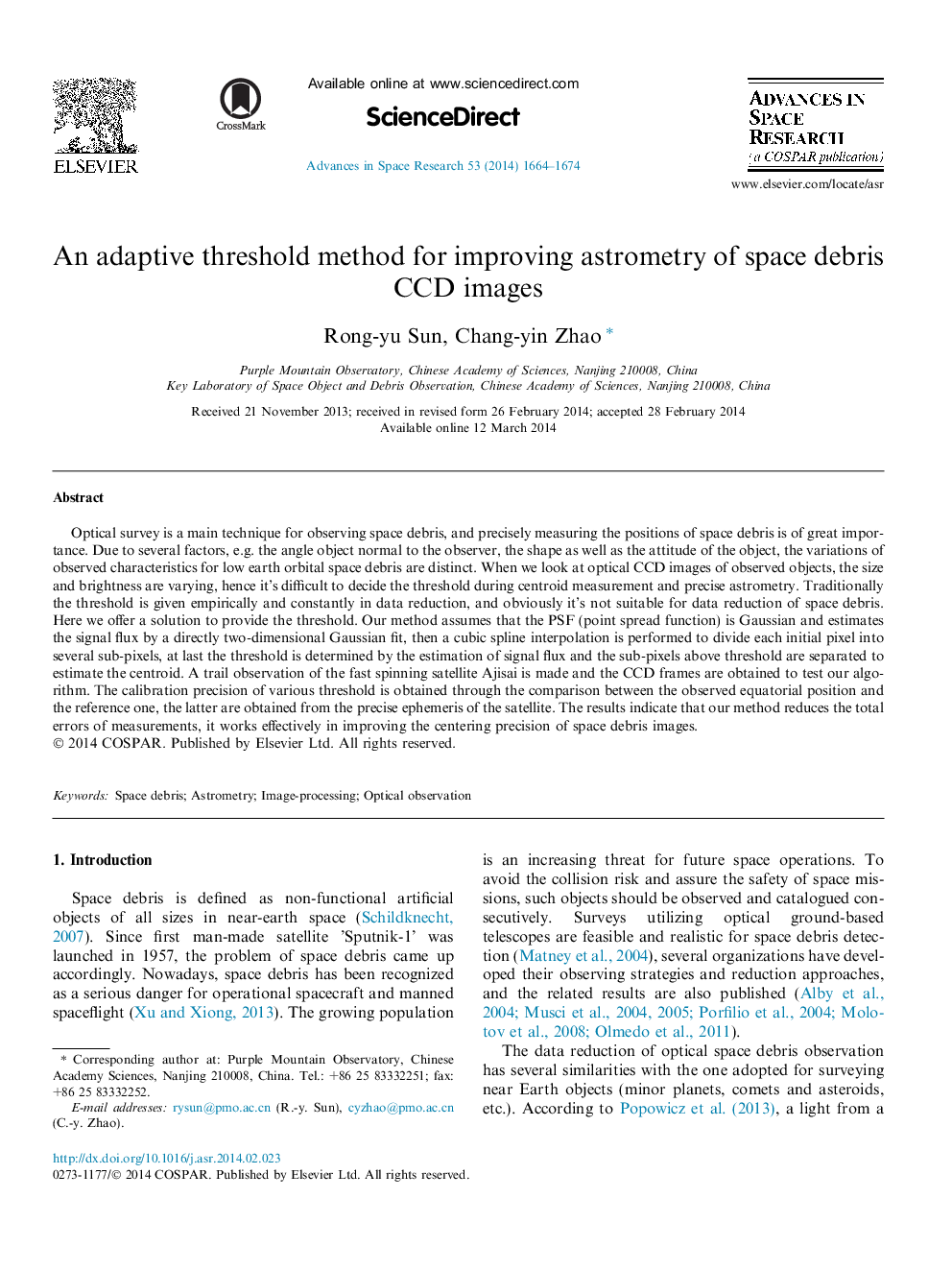| Article ID | Journal | Published Year | Pages | File Type |
|---|---|---|---|---|
| 1764067 | Advances in Space Research | 2014 | 11 Pages |
•An adaptive threshold method is developed.•Our method provides optimal threshold in space debris centering.•Our method improves the astrometric precision for space debris.•Performance of our method is tested based on raw CCD images.
Optical survey is a main technique for observing space debris, and precisely measuring the positions of space debris is of great importance. Due to several factors, e.g. the angle object normal to the observer, the shape as well as the attitude of the object, the variations of observed characteristics for low earth orbital space debris are distinct. When we look at optical CCD images of observed objects, the size and brightness are varying, hence it’s difficult to decide the threshold during centroid measurement and precise astrometry. Traditionally the threshold is given empirically and constantly in data reduction, and obviously it’s not suitable for data reduction of space debris. Here we offer a solution to provide the threshold. Our method assumes that the PSF (point spread function) is Gaussian and estimates the signal flux by a directly two-dimensional Gaussian fit, then a cubic spline interpolation is performed to divide each initial pixel into several sub-pixels, at last the threshold is determined by the estimation of signal flux and the sub-pixels above threshold are separated to estimate the centroid. A trail observation of the fast spinning satellite Ajisai is made and the CCD frames are obtained to test our algorithm. The calibration precision of various threshold is obtained through the comparison between the observed equatorial position and the reference one, the latter are obtained from the precise ephemeris of the satellite. The results indicate that our method reduces the total errors of measurements, it works effectively in improving the centering precision of space debris images.
